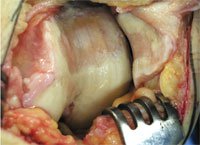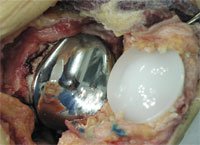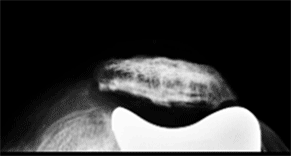PF replacement arthroplasty indicated for older patients with isolated osteoarthritis
The procedure is contraindicated in young patients, those with abnormal knee and patellar anatomy.
Click Here to Manage Email Alerts
Patellofemoral replacement is a reliable surgical option for older patients whose knee osteoarthritis is limited to the patellofemoral joint, according to a total joint replacement surgeon who said about 5% of his patients with knee arthritis qualify for the procedure.
“It is certainly not for every patient. You have to select these patients, and if you select the right ones, they do quite well,” said Aaron A. Hofmann, MD, who has compiled a successful series of these “third” knee compartment arthroplasties.
Hofmann discussed his patellofemoral replacement surgery experience at the 25th Annual Current Concepts in Joint Replacement Winter Meeting, where he reviewed the indications and his preferred surgical technique.
Early results with his short series of cases are due to be published this month, he said.
|
|
Images: Hofmann AA |
Isolated osteoarthritis
In Hofmann’s hands, patellofemoral replacement arthroplasty is indicated for individuals with isolated patellofemoral osteoarthritis (OA) who have an otherwise healthy tibial-femoral joint. This means most of those who undergo the procedure have post-traumatic OA and have usually failed multiple other treatments for it, except arthroplasty.
Inflammatory arthritis, chondro-calcinosis, maltracking patellae and malaligned knees are among the contraindications that Hofmann discussed.
He said he tries to avoid operating on patients with patellar subluxation, a large Q angle or a previously injured ACL.
In the long run, it is probably best to avoid doing a patellofemoral replacement procedure in younger patients with chondromalacia or who have undergone arthroscopy multiple times, Hofmann said. “In my hands, they don’t do well.”
|
|
|
|
|
|
|
A well-positioned Natural Knee II patellofemoral replacement prosthesis (Zimmer) is seen in three postoperative radiographs of the same patient. |
|
Young patients’ postoperative expectations are also too high, he noted during the discussion period.
Older patients, between ages 70 and 80 years, tend to have the kind of isolated pathology that meets the indications.
All patients recover quickly, he said. “The patient satisfaction is extremely high.”
Extramedullary jigs
During surgery, Hofmann completes the patellar preparation the way he usually does it for a total knee replacement, using a subvastus approach and subluxing the patella to move it out of the way.
“I prefer an extramedullary approach,” although an intramedullary approach can be used, he said.
Hofmann’s prosthesis of choice consists of two anterior and two slightly more distal facets. Two jigs aid with the facet bone cuts, the first of which is placed in the anterior cortex to make the cut. The second jig, which is slightly more complicated to place, aids in resecting the distal bone.
Hofmann then places the trial components. He described the final component as having a center pin which acts like “a fence post that basically keeps you from getting too far into the opposite plane.”
Good outcome scores
The cemented prosthesis comes in a small and large size, which Hofmann uses in women and men, respectively.
Two patients in his soon-to-be-published series of patellofemoral replacements needed reoperations. One of them was a snowboarder and mountain biker whose femoral component loosened and required re-cementing. He probably did not meet the indications, according to Hofmann.
However, when the indications for patellofemoral replacement are respected, “It gives good early results and the best part about this is the patients are out of the hospital early with high KOOS (Knee Injury and Osteoarthritis Outcome Scores) and Tegner scores,” he said.
For more information:Reference:
- Aaron A. Hofmann, MD, can be reached at the University Orthopedic Center, 590 Wakara Way, Third Floor, Salt Lake City, UT 84108; 801-587-5400; e-mail: aaron.hofmann@hsc.utah.edu. He has no direct financial interest in any products or companies mentioned in this article.
- Hofmann, AA. Patello-femoral replacement: The third compartment. #72. Presented at the 25th Annual Current Concepts in Joint Replacement Winter Meeting. Dec. 10-13, 2008. Orlando, Fla.





